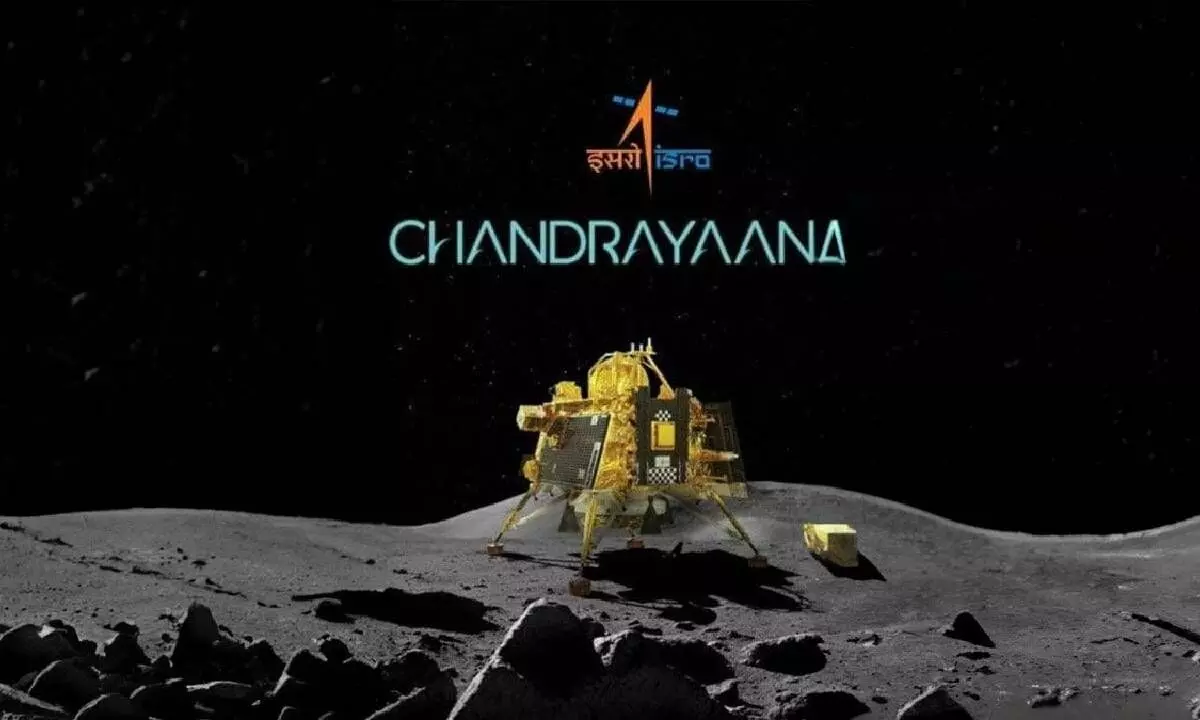Chandrayaan-3's success a shot in the arm for India to rev up its space quest
Country should now aim at sending humans to the Moon within the next 5 years
image for illustrative purpose

The entire nation was on the cloud nine when Chandrayaan 3.0 successfully planted the country's flag on the mineral-rich South Pole of the Moon, our Mother Earth's only natural satellite, on an epoch-making August 23 evening.
Every Indian has every right to be elated about the momentous occasion. For, the country notched several unique milestones on the outer space landscape when Vikram lander carrying Pragyan rover touched down on lunar surface without any hitch, and the rover rolled off smoothly. India is the first country to set its foot on the lunar South Pole and only fourth after the US, Russia and China to have a rover on the lunar surface.
The United States of America (USA) is far ahead of India in lunar exploration. It sent humans to the Moon way back in 1969. That way, India has a long, long way to go. But this doesn't take away the credit for its latest achievement on the Moon.
It is said that the lunar South Pole is the place where humans can have an outpost whenever that happens. This region also has a vast quantity of water stored in solidified form. It is also home to important minerals such as helium 3, plutonium, lithium, titanium, potassium and several others. Helium and plutonium are widely used in nuclear energy while lithium is of immense use for the electric vehicle industry. Given that South Pole is a mineral-rich territory, India has a first mover advantage there.
Therefore, the Indian Space Research Organisation (ISRO), the brain behind India's quest in outer space, deserves appreciation for selecting such a strategic location for its lunar endeavour and successfully accomplishing it.
The success didn't come easily, though. ISRO began its lunar quest in 2008 when it launched Chandrayaan mission. It made its first attempt with Chandrayan-1 that failed. The second attempt made in 2019, Chandrayan-2, also didn't succeed. As the cliché goes, failures are stepping stones to success and the success of Chandrayaan-3 proves it again. ISRO's latest success will India tap what is called the Moon economy. It will also boost India's anti-satellite weapons capability as well.
The Indian Space Association in association with global consultancy major Ernst & Young, popular as EY, brought out a report which estimated India's Moon economy to be $13 billion (Rs 1.07 lakh crore) by 2025, which is quite a significant number. The economy will get a further boost now, thanks to the success of Chandrayaan-3 mission. India's image will also go up globally and it will gain more geopolitical prominence now. This success will help India checkmate its communist neighbour China, which has turned adventurous when it comes to outer space.
However, there is no need to attach any political significance to the success of the Chandrayaan 3.0. The Mission Chandrayan kicked off and the first attempt was made when the United Progressive Alliance (UPA) was in power. The second and successful third attempts were made under Prime Minister Narendra Modi. BJP obviously gloats about it as it's in power at the Centre now. There is nothing wrong with it. Any other government would have done the same. But ISRO will continue its missions irrespective of who is ruling the country.
However, the Modi government has been giving importance to India's space missions. India signed the Artemis Accord with National Aeronautics and Space Administration (NASA) in June. This is expected to boost India-US cooperation in outer space. ISRO, which also announced its plans for Sun now, had in the past initiated Gaganyaan programme to send humans into space.
It looks like golden days are ahead for India's space sector.
Nearly six decades back, the US aimed at sending humans to the Moon after John F. Kennedy, the country's 35th President, set a goal for the country in 1961 to land a man on the Moon and bring him back safely to the Earth within a decade. Though Kennedy was assassinated two years later in 1963, the US achieved the lunar goal set by him within the timeline he fixed. Quite ironically, the US has not done much on the lunar front thereafter!
Can India set a similar goal and send humans to the Moon, say by 2028? Hope Modi emulates Kennedy and sets such a goal for Team ISRO. And it's not an impossible goal given the milestones ISRO has set in outer space. A manned lunar mission will obviously take the Indian flag to newer heights in the outer space world. Furthermore, as India aims to be a developed nation by 2047, the space economy, including space tourism, will obviously play a key role in achieving the coveted goal.

